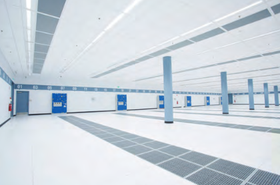In our increasingly digital era, data centers are the titans of information flow.
These large facilities, which store, process, and distribute mass amounts of digital data, are extremely energy-intensive due to their reliance on constant server operation and security.
To put it into perspective, a 100MW data center has the equivalent energy demand of 50,000 flats.
The energy consumption of data centers is projected to reach 20 percent of global energy usage by 2040, up from three percent in 2017 [though such predictions should be taken with a pinch of salt - Ed].
Primary drivers behind this surge include a continuous influx of new IT equipment being introduced to the market – necessary to keep pace with technological advancements; coupled with increased global temperatures, which impose a significant additional load on data center cooling systems.
The key to cost reduction
‘Ramping rates’ is a model which has newly emerged in energy landscape, as a means for larger businesses – including data centers – to effectively manage their surging energy demands.
It allows operators to scale their energy consumption in line with their growth, avoiding the financial burden of securing full capacity upfront.
Traditional energy procurement models often require significant initial investment based on projected future needs, leading to inefficiencies and increased costs when actual usage does not align with these forecasts.
The ramping rate method is a flexible solution, enabling data centers to pay for only the electrical capacity they currently need while retaining the option to expand their capacity as demand grows.
This approach not only optimizes financial outlays by reducing unnecessary capacity charges but also supports sustainable growth. For those aiming for expansion, leveraging the model offers not just a cost-saving measure, but an investment in a sustainable future.
An empowered future
The benefits of adopting ramping rates extend beyond cost savings. This model fosters operational flexibility, allowing data centers to adapt to the rapidly changing technology landscape without the constraints of fixed energy capacities.
As a result, operators can more effectively plan for future expansions, ensuring that their facilities remain at the forefront of technological innovation and efficiency.
As the digital economy continues to expand, adopting such innovative solutions will be key for data centers aiming to thrive in an increasingly competitive and environmentally conscious market.







